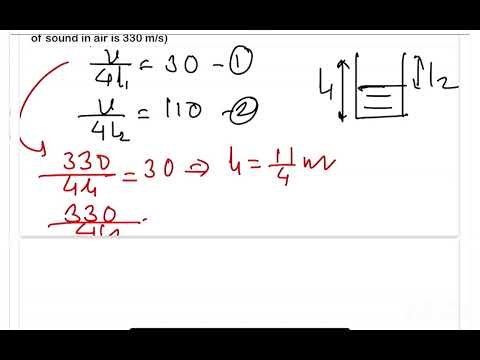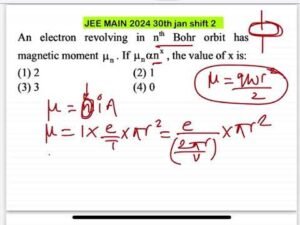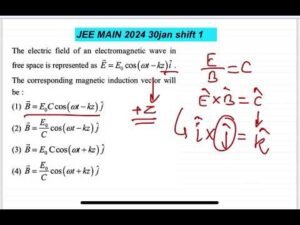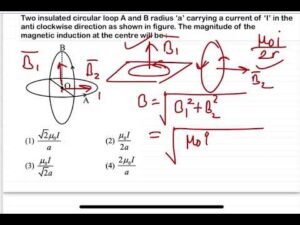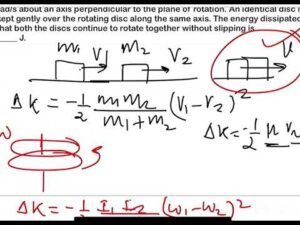*Playlist JEE MAIN 2024(30jan shift1)**
****2024 complete solution playlist**😃🤘🏻
*****2025 complete solution playsit*****
***All JEE Main/AIEEE questions playlist***😃🤘🏻
***All NEET PYQs playlist***😃🤘🏻
✅✅✅😃You can also find for chapterwise playlist of JEE MAIN and NEET on the channel👍🏻👍🏻✅✅✅
#jee,#jeemain,#iitjee,#neet,#pyq,#importantquestions,#jeemainpapersolution,#jeemain2025,#physicsmonk
In a closed organ pipe, the frequency of fundamental note is 30 Hz. A certain amount of water is now poured in the organ pipe so that the fundamental frequency is increased to 110 Hz. If the organ pipe has a cross-sectional area of 2 cm2, the amount of water poured in the organ tube is ______ g. (Take speed of sound in air is 330 m/s)
Welcome to Allen.AskDoubtnut.com – India’s Largest Platform for Instant Doubt Solutions
Allen.AskDoubtnut.com is the ultimate destination for instant video solutions to your doubts in Physics—from Class 11th to JEE Advanced and NEET level. With a growing library of over 15 lakh+ expert-created video solutions, we make learning fast, easy, and effective.
Just click a photo of your doubt using the AskDoubtnut in the end and submit in google, and get an instant, step-by-step video explanation. It’s the simplest way to solve doubts in seconds—whether you’re studying for CBSE board exams, IIT-JEE, NEET, or any other competitive exam.
Why AskDoubtnut.com?
• 10,00,000+ Free Video Solutions
• Covers NCERT, JEE Main, JEE Advanced, NEET, and State Boards
• Unlimited Doubt Solving with Just One Click
• Instant, Concept-Based Answers by Experts
• 24×7 Learning Support via the AskDoubtnut App
Trusted by millions of students across India, Allen.AskDoubtnut.com helps you turn doubts into confidence. No more waiting—ask, learn, and grow with Allen.AskDoubtnut.com!
Frequently Asked Questions
How to prepare for IIT-JEE Physics?
To prepare for IIT-JEE Physics, focus on understanding concepts rather than memorizing formulas. Practice solving a variety of problems, especially previous years’ questions. Create a study schedule that covers all topics, with extra time for challenging areas like Mechanics and Electromagnetism. Regular revision and mock tests are essential for success.
What is the difference between transverse and longitudinal waves?
In transverse waves, the particles of the medium vibrate perpendicular to the direction of wave propagation. Examples include light waves and waves on a string. In longitudinal waves, the particles vibrate parallel to the direction of wave propagation. Sound waves and compression waves in springs are examples of longitudinal waves.
How to effectively solve physics numerical problems?
To solve physics numerical problems effectively, first understand the concept thoroughly. Then follow these steps: 1) Read the problem carefully and identify the given quantities and what needs to be found. 2) Draw a diagram if applicable. 3) Write down the relevant formulas. 4) Substitute the values with proper units. 5) Solve step by step. 6) Verify your answer by checking units and whether the result makes physical sense.

